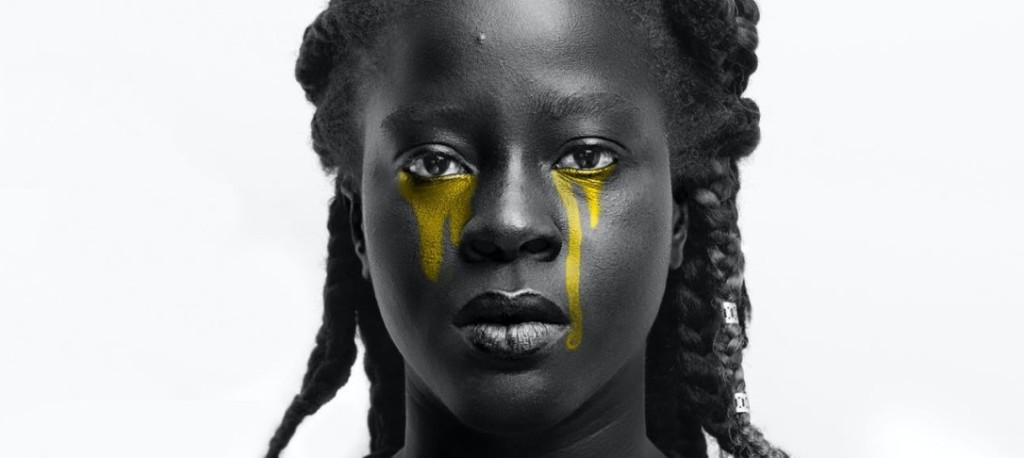That’s some rough girls from Rutgers, man, they got tattoos…some hardcore hos, that’s some nappy headed hos there!
Don Imus

Misogynoir is the dual discriminatory practices, behaviours and attitudes directed towards black women for their race and their gender. The term was coined by queer black feminist and poet Moya Bailey and is a portamenau of the words “misogyny” and “noir” – the latter being the French word for “black”. Bailey explained that she came up with the word to describe the unique ways in which Black women are presented by the media, and the deleterious effects it has on public perceptions of Black women:
“I say all this to say that it is important to me and to at least one other non Black person of color that the term is used to describe the unique ways in which Black women are pathologized in popular culture. What happens to Black women in public space isn’t about them being any woman of color. It is particular and has to do with the ways that anti-Blackness and misogyny combine to malign Black women in our world.”
Moya Bailey
Bailey credits the blogger Gradient Lair for popularisation of the term in current parlance. The basis of its usage is grounded within the framework of intersectionality and a womanist lens.
While existing stereotypes of black women such as the “angry black woman” or the “sassy black woman” alongside a long history that excluded and delegitimised black women from presentations of culturally acceptable femininity (at least, in proximity to whiteness) – early discussions and conceptions of misogynoir focused on the presentation of black women within hip-hop culture, suggesting that internalised oppression within the black community proliferated within popular culture. That said, Bailey and other observers were insistent on the social phenomena that is specific to the experience black women as a whole as a result of the prevailing cultures of sexism and antiblackness intersecting:
“Back in spring 2008, (I love the Gmail archive) I was talking to one of my best friends, Mia Mingus, about the ways that Black women are depicted in the media. She, a self described “queer physically disabled Korean woman transracial and transnational adoptee,” suggested that there could be a term to describe just that, because she too noticed that the way Black women were treated was different from other women of color. I played around with words and ultimately settled on misogynoir… I had other Black women, Whitney Peoples, Alexis Pauline Gumbs, among others, vet the term and we talked about its potential utility, its pros and cons. I started to use it on the Crunk Feminist Collective and members of the CFC started to use it too…It took on a life of its own on tumblr and it is amazing that so many folks I don’t know have taken it up and use it far more frequently than I have… I don’t know that lumping all other WOC into one category is useful, especially when the differences between us could help us root out our own internalized oppression.”
“I was looking for precise language to describe why Renisha McBride would be shot in the face, or why the Onion would think it’s okay to talk about Quvenzhané the way they did, or the hypervisibilty of Black women on reality TV, the arrest of Shanesha Taylor, the incarceration of CeCe, Laverne and Lupita being left off the TIME list, the continued legal actions against Marissa Alexander, the twitter dragging of black women with hateful hashtags and supposedly funny instagram images as well as how Black women are talked about in music. All these things bring to mind misogynoir and not general misogyny directed at women of color more broadly…”
Moya Bailey
Examples of instances commonly cited as misogynoir:
- The forced sterilisations conducted on working-class black women by doctors in the United States – of which civil rights activist Fannie Lou Hamer was the most prominent victim.
- British Member of Parliament Diane Abbott being the recipient got the greatest incidents of online abuse out of any other female MP, most of which target her for her gender and her race. Amnesty International reported that nearly half of all recorded abusive tweets sent to female MPs in the six weeks before the 2017 general election were directed towards Abbott alone.
- The allegations Meghan Markle made of the British Royal Family regarding a failure from them to protect her from being targeted by the British tabloid press, racialised comments made about her then-unborn son from members of Royal Family, and denying her access to mental health treatment as she suffered from depression.
- The derogatory comments made of Serena Williams’ physique and behaviour, notably the cartoon produced by Australian artist Mark Knight presenting Williams’ outburst towards an umpire during her match with Naomi Osaka in the 2018 Grand Slam final (Osaka herself is coded as white in the cartoon, despite being of dual Haitian and Japanese heritage).
- The aforementioned incident in 2007, with shock-jock Don Imus mocking the appearances of the mostly-black Rutgers University female basketball team.
- The lack of response from the Metropolitan Police to the disappearance of sisters Bibaa Henry and Nicole Smallman; their bodies only discovered by their family and friends, and even photos of their bodies shared by police officers on WhatsApp.
There are many, many examples to describe misogynoir and are often summed up in two words, “black bitch” (or some other derivative). However, prior to 2010 there was never a word to describe the phenomenon. Gradient Lair also coined the term transmisogynoir to describe the discriminatory practices, behaviour and attitudes directed towards black trans women who face particularly disproportionate violence.
See also:
- Triple oppression
- Intersectionality
- Antiblackness
- Womanism
- Gradient Lair
- Hip-hop and women
2 thoughts on “Misogynoir”